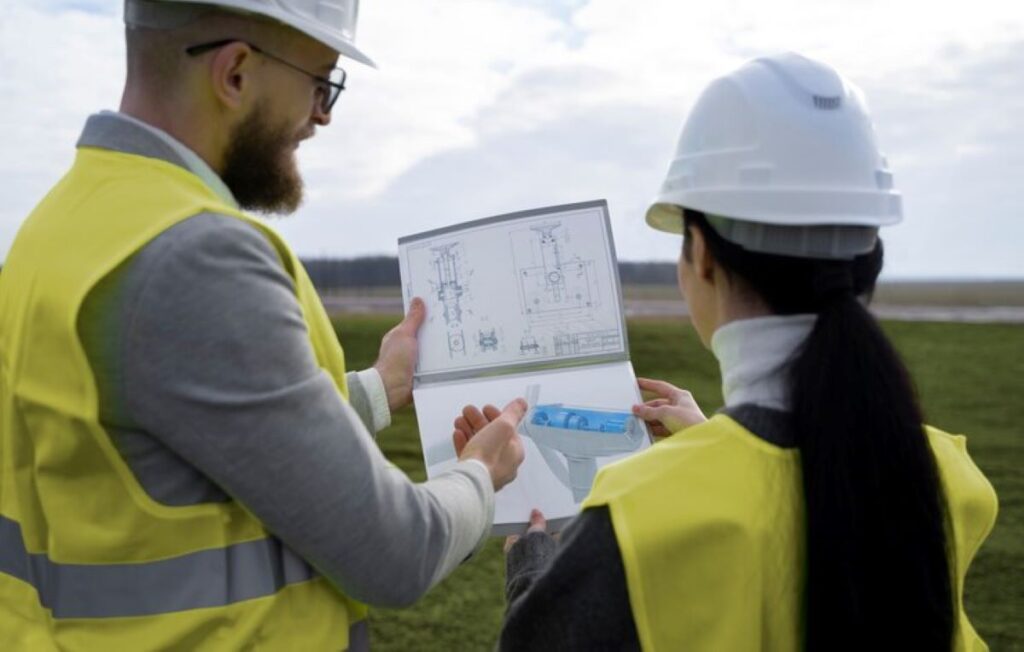
In the realm of construction, accuracy is not just a preference—it’s a necessity. Engineering surveys lay the groundwork for successful projects by ensuring precision in every stage of development. As complex constructions become increasingly common, the need for meticulous surveying has never been more critical. Let’s dive deeper into understanding why precision is paramount in engineering surveys.
Understanding the importance of precision in engineering surveys
Precision in survey engineer is crucial for the overall success of any construction initiative. It sets the stage for safety, quality, and compliance with various regulations. When measurements are accurate, project delays can be minimised, and the chances of costly mistakes significantly reduced.
The role of precision in complex construction projects
Complex construction projects, such as skyscrapers or intricate bridges, rely heavily on precise engineering surveys. The stakes are incredibly high, with numerous variables at play, from topography to structural requirements.
In this context, precision ensures that all aspects of the project align correctly, making it easier to manage logistics and coordinate with different teams. Miscalculations can lead to structural failures or even accidents, underlining the necessity for accuracy.
Furthermore, the integration of advanced technologies, such as Geographic Information Systems (GIS) and 3D laser scanning, has revolutionised the field of engineering surveys. These tools allow for an unprecedented level of detail and accuracy, enabling surveyors to capture complex data that traditional methods might overlook. As a result, teams can visualise potential challenges before they arise, fostering a proactive approach to problem-solving that is essential in the fast-paced environment of modern construction.
The impact of precision on project outcomes
The consequences of precision—or lack thereof—are profound. Accurate surveys contribute to the integrity of the design, allowing architects and engineers to produce plans that reflect the realities of the site. When surveys are done correctly, materials can be procured with confidence and construction can proceed smoothly.
Moreover, the financial aspects cannot be overlooked. A precise survey means fewer unforeseen costs, leading to substantial savings for stakeholders. In contrast, errors in surveying can spiral into significant budget overruns and timeline extensions, impacting overall project feasibility. Additionally, the reputational damage that can occur from project delays or failures due to imprecise surveys can have long-lasting effects on a company’s standing in the industry. Clients are increasingly discerning, and a track record of precision can be a decisive factor in securing future contracts, making it imperative for firms to prioritise accuracy in their surveying processes.
The science behind engineering surveys
Understanding the scientific principles behind surveying can illuminate why precision matters so much. With a blend of mathematics, physics, and technology, engineering surveys harness these disciplines to deliver reliable data.
Key principles of engineering surveys
At the heart of effective engineering surveys are fundamental principles like triangulation and trigonometry, which map out the physical landscape in detail. Surveyors often rely on these methods to create accurate representations of the area in question.
These principles are supported by rigorous techniques and tools, such as total stations and GPS technology, which facilitate even greater precision in measurements.
Advanced technologies in engineering surveys
The innovations in surveying technology have dramatically transformed the industry. Tools such as LiDAR (Light Detection and Ranging) and drone surveying offer unparalleled accuracy and efficiency. LiDAR, for instance, can capture vast areas in a short time, producing detailed 3D models essential for planning and analysis.
These technologies not only intensify precision but also enhance safety by allowing surveyors to gather data from hard-to-reach locations without risking human safety.

The process of conducting a precise engineering survey
Conducting a precise survey involves a series of well-defined steps, all geared towards ensuring accuracy. From preparations to execution, each phase plays a vital role in the overall outcome.
Pre-survey preparations for accuracy
Before surveying can even begin, careful planning is essential. This includes evaluating the project scope, identifying potential challenges, and choosing the right equipment. An effective pre-survey strategy ensures that every possible variable is accounted for.
Surveyors also need to select the right time of day and environmental conditions to minimise errors introduced by factors like uneven lighting or wind interference.
Steps in the surveying process
Once preparations are completed, the surveying process can commence. It generally follows these key steps: data collection, analysis, and reporting. The collected measurements are processed and analysed to create accurate models.
Finally, the results are compiled into reports that serve as a reference point for all project stakeholders. These reports provide detailed insights that can guide decision-making throughout the construction process.
Challenges in achieving precision in engineering surveys
Despite advancements in technology and methodology, achieving precision in engineering surveys is not without its challenges. Various factors can introduce errors and complicate the surveying process.
Common obstacles in complex construction projects
One of the most common obstacles is environmental variability, such as changes in weather and ground conditions. These factors can affect visibility and accessibility, making it difficult for surveyors to obtain accurate measurements. Additionally, human error—whether due to fatigue or miscommunication—can also play a role in inaccuracies.
Strategies to overcome precision-related challenges
Fortunately, several strategies can be adopted to mitigate these challenges. For instance, implementing regular training programmes ensures that surveyors are up to date with the latest technologies and methods.
Moreover, using integrated systems that combine data from multiple sources can significantly enhance accuracy. These systems leverage redundant data points, thereby reducing the likelihood of errors during the surveying process.
The future of precision in engineering surveys
The landscape of engineering surveys is continuously evolving, with advancements paving the way for improved precision and efficiency. The future looks bright, thanks to ongoing investments in research and development.
Innovations shaping the future of engineering surveys
New innovations such as artificial intelligence and machine learning are beginning to play a crucial role in analysing survey data. These technologies can process vast amounts of information quickly, identifying patterns and discrepancies that might otherwise go unnoticed. Want to get more about the role of an engineer surveyor in large-scale developments visit https://weichertpg.com/the-role-of-an-engineer-surveyor-in-large-scale-developments/
Such advancements promise to make surveying more efficient, allowing for quicker decisions and reducing opportunities for human error.

The role of digital transformation in enhancing precision
As the industry moves towards digital transformation, the integration of digital models with real-world data will enhance precision even further. This convergence will enable stakeholders to visualise projects before they commence, facilitating better planning and resource allocation.
Overall, the landscape of engineering surveys is set to change dramatically, and staying abreast of these developments will be pivotal for those in the construction industry. Embracing these changes not only fosters precision but also signals a commitment to excellence in engineering practices.
